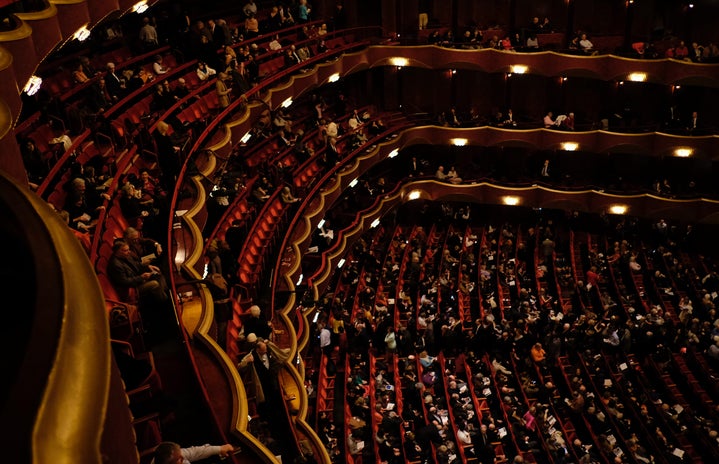Social media has become a central part of our lives. According to the Pew Research Center, 95% of teenagers have access to a smartphone. Every news media now has a platform on Youtube, Instagram and Snapchat, which are among the most popular online platforms.
Almost every celebrity and politician now use social media as a form to communicate with their audience. And yet, the entertainment industry does not seem to see the potential of this medium. TV show accounts may post announcements and promotional pictures and videos, but they are still missing an opportunity – an opportunity that Skam saw and used it so well that attracted international attention.
“Skam,” which translates into “shame” in English, is a Norwegian TV show that follows the daily lives of teenagers in a public secondary school in West End Oslo. Though its premise is not much different from what has already been produced by American networks, the series was innovative in its medium and how it delivered itself.
The series released daily clips ranging from two to 15 minutes in their network’s website, and posts on Instagram, launching the full episode of the week Friday on television.
What was different about these Instagram posts was that accounts belonged to the characters of the TV show.
While social media is widely used for marketing of television, Julie Andem, the creator of “Skam” Norway and the concept of the series, used it to immerse the audience in the show. Each character has a profile on Instagram and posts periodically, allowing fans to follow their activity.
“I think [the use of social media accounts] was revolutionary because I had never seen anything like this before,” Caroline Yumi, a fan of the show, said in a social media fan group. “I watched the fourth season in real time, and it was an incredible experience. In the fourth season, they explored teenagers’ use of social media, and they made the audience learn with the characters about dissemination of hate online.”
The series has also been well-regarded for how it tackles issues common in adolescence.
“I think the show is really popular amongst teenagers because it is so relatable,” freshman journalism major Hannah Stryker said. “It shows the struggles that teenagers deal with along with various happy moments; a typical teenage rollercoaster ride.”
Each season of “Skam” had a different main character, representing the different struggles of growing up.
Tumblr
Eva Mohn, in the first season, dealt primarily with insecurity, self-esteem, and the hardship of new relationships.
Noora Sætre, Eva’s friend, continued as a feminist force in the second season, leading the show in discussions about sexual violence and feminism.
The third season focused largely on acceptance and love through the relationship between Isak Valtersen and Even Bech Næsheim, both who became the main LGBT characters of the series.
And the fourth season had Sana Bakkoush, a Muslim-Norwegian young woman, with a storyline around the Islamic religion, cyberbullying and friendship.
Ole Hedemann, who is the head of formats and a content developer for the show’s network, said the main objective of the show was to help teenagers “strengthen their self-esteem through dismantling taboos, making them aware of interpersonal mechanisms, and showing them the benefits of confronting their fears.”
By the end of the fourth season, “Skam,” broadcast in a country with 5 million citizens, had a weekly audience of 1.2 million viewers. Even after the series came to an end due to high production stress, “Skam” is still widely popular. Seven adaptations of the series are currently airing – “Skam France,” “DRUCK” (Germany), “SKAM Italia,” “SKAM Austin,” “SKAM España,” “SKAM NL” (Netherlands) and “wtFOCK” (Belgium).
Wikimedia
Her Campus interviewed Assa Sylla, a Parisian-born actress of Mauritanian descendant, who plays Imane Bakhellal in “Skam” France. When she first auditioned for “Skam” France, Sylla didn’t know the Norwegian series, and did not watch it until she passed the casting.
“When it was announced that I got the role for Imane, I watched all the four seasons,” Sylla said. “I really loved it. I thought it was a great idea… France lacks a series of young people. I think [many topics that the series address] should be addressed in France, notably homosexuality and Islam.”
Sylla recognizes herself in Imane, not only because the actress is of Muslim faith but because Imane “is a girl with a big heart, who says what she thinks, and who is there for her friends.” She sees it as a great honor for her to play this role.
“It is so rare to see a girl with a veil in France as the lead role on TV. It’s beautiful to see that [the Muslim youth in France] can finally identify with [Imane],” Sylla said. “Many people will be able to understand better what they go through on a daily basis. I hope there will be less prejudice regarding the wearing of the veil, and that people will be more understanding and tolerant.” According to France Televisions, the network that broadcasts “Skam” France, the series has reached 9 million views. Sylla attributes the series’ success to the characters.
“Everyone can identify with the characters,” Sylla said. “This is the first series that talks about the problems of young people in high school. “Skam” talks about everything and everyone … Personally, I think there is not enough representation on television … minorities are visible but not highlighted on television. Television is late in terms of the real situation in society.”
“Skam” France is currently in its third season, which Sylla says that will be similar to the original version, but with a lot of changes. The fourth season will have Imane as the main character and is expected to be “totally different” from “Skam” Norway.
“I will let you discover.” She said.



